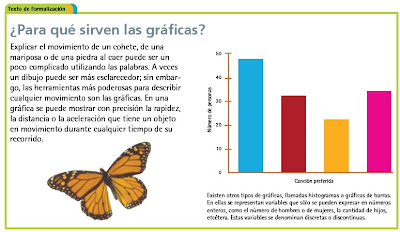SEPyC Expected learning:
Elabora e interpreta tablas de datos y gráficas de velocidad-tiempo y aceleración- tiempo para describir y predecir características de diferentes movimientos, a partir de datos que obtiene en experimentos y/o situaciones del entorno.
CLASS 01
The Meaning of Shape for a position - time Graph (Also called distance vs time graphs)
"As the slope goes, so goes the velocity."
The shapes of the position versus time graphs for these two basic types of motion - constant velocity motion and accelerated motion (i.e., changing velocity) - reveal an important principle.
The slope of the line on a position-time graph reveals useful information about the velocity of the object.
Whatever characteristics the velocity has, the slope will exhibit the same (and vice versa):
*If the velocity is constant, then the slope is constant (i.e., a straight line).
*If the velocity is changing, then the slope is changing (i.e., a curved line).
*If the velocity is positive, then the slope is positive (i.e., moving upwards and to the right).
*If the velocity is negative, then the slope is negative (i.e., moving downwards and to the right).
Slope = Velocity
The principle of slope is an incredibly useful principle for extracting relevant information about the motion of objects as described by their position vs. time graph. Once you've practiced the principle a few times, it becomes a very natural means of analyzing position-time graphs.
Remember that...
The slope of a position vs. time graph reveals pertinent information about an object's velocity.
For example,
A small slope means a small velocity;
A negative slope means a negative velocity;
A constant slope (straight line) = a constant velocity;
A changing slope (curved line) = a changing velocity.
Thus the shape of the line on the graph (straight, curving, steeply sloped, mildly sloped, etc.) is descriptive of the object's motion
CLASS 02 Determining the Slope on a position - time Graph
The slope equation says that the slope of a line is found by determining the amount of rise of the line between any two points divided by the amount of run of the line between the same two points. In other words,
1. Pick two points on the line and determine their coordinates.
2. Determine the difference in y-coordinates of these two points (rise).
3. Determine the difference in x-coordinates for these two points (run).
4. Divide the difference in y-coordinates by the difference in x-coordinates (rise/run or slope).
EXAMPLE 1: Consider the graph below. Note that the slope is not positive but rather negative; that is, the line slopes in the downward direction.
Note also that the line on the graph does not pass through the origin. Slope calculations are relatively easy when the line passes through the origin since one of the points is (0,0).
Answer: Slope = -3.0 m/s
Using the two given data points, the rise can be calculated as -24.0 m (the - sign indicates a drop).
The run can be calculated as 8.0 seconds. Thus, the slope is -3.0 m/s.
CLASS 03 Velocity vs. Time Graphs
The slope of a velocity vs time graph represents the acceleration of the object.
Answers: a, d and h apply.
a) TRUE since the line is in the positive region of the graph.
b) FALSE since there is an acceleration (i.e., a changing velocity).
c) FALSE since a negative velocity would be a line in the negative region (i.e., below the horizontal axis).
d) TRUE since the line is approaching the 0-velocity level (the x-axis).
e) FALSE since the line never crosses the axis.
f) FALSE since the line is not moving away from x-axis.
g) FALSE since the line has a negative or downward slope.
h) TRUE since the line is straight (i.e, has a constant slope).
CLASS 04 Relating the Graph Shape to the Object’s Motion
REPASO REPASO REPASO REPASO REPASO REPASO REPASO REPASO REPASO
REVIEW. Check Your Understanding (Repaso).
Describe the motion depicted by the following velocity-time graphs.
In your descriptions, make reference to the direction of motion (+ or - direction), the velocity and acceleration and any changes in speed (speeding up or slowing down) during the various time intervals (e.g., intervals A, B, and C).
Do you want to learn more?
Lessons
http://www.physicsclassroom.com/Class/1DKin/U1L3a.cfm
Videos
http://www.physicsclassroom.com/mmedia/index.cfm#kinema


























No hay comentarios:
Publicar un comentario